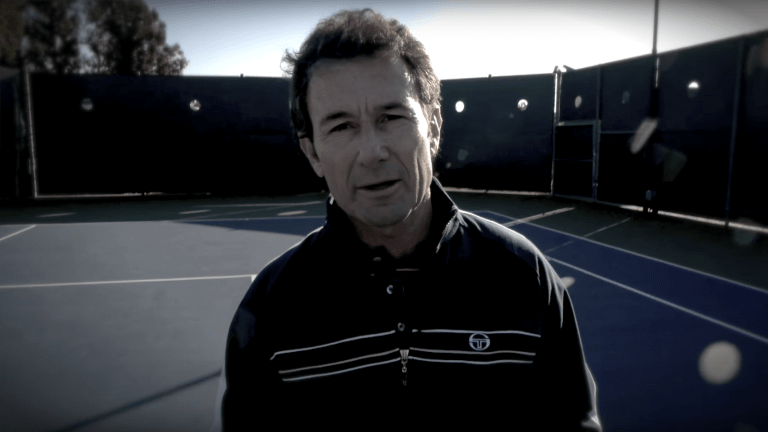The tennis world was saddened to learn of the death of Bill Scanlon, who died of cancer on Wednesday, June 2, at the age of 64, in Park City, Utah. Scanlon is survived by his wife, Stephanie.
An elegant serve-and-volley player, Scanlon’s tennis journey took several distinct twists and turns. In 1976, as a sophomore at Trinity University, Scanlon won the NCAA singles title, beating UCLA’s Peter Fleming in the finals. Within a year, he’d cracked the ATP Top 30. But by September 1978, Scanlon’s ranking stood at 100, the result of everything from complications with a new racquet to the weariness that accompanies life as a globe-trotting competitor. Addressing the latter, Scanlon that fall told Bud Collins, “it gets old.”
Off to Hawaii the next month to relax, he opted to enter the ATP tournament in Maui. Scanlon ended up winning it, beating Cliff Drysdale, Harold Solomon, Gene Mayer, John McEnroe and, in the finals, Fleming, by the emphatic score of 6-2, 6-0. That was the first of Scanlon’s seven ATP singles titles.
Scanlon’s matches with McEnroe were combustible. Though McEnroe led the rivalry 9-3, their battles were both volatile and tactical. Never willing to be bullied by McEnroe’s gamesmanship, Scanlon confronted him often and also played a brand of forceful, attacking tennis that, when working well, posed many challenging questions.
When I once asked Scanlon to reveal one of his effective plays, he cited how McEnroe enjoyed hitting a variety of service returns off both flanks—angles and dips, rips and chips. But once Scanlon determined which side McEnroe wasn’t feeling as sharp on that day, he’d serve to it repeatedly, in essence denying McEnroe the chance to be creative. Fittingly enough, Scanlon’s finest moment in tennis came when he beat McEnroe in the round of 16 of the 1983 US Open, winning by the tight score of 7-6, 7-6, 4-6, 6-3. He’d go on to reach the semis before losing to eventual champion Jimmy Connors.
Several months after that, in January 1984, Scanlon reached a career-high ranking of No. 9 in the world. Besides defeating McEnroe, Scanlon also earned wins over six other players who were once No. 1: Stan Smith, Ilie Nastase, Bjorn Borg, Ivan Lendl, Boris Becker and Andre Agassi.

